US Airways 2004 Annual Report Download - page 43
Download and view the complete annual report
Please find page 43 of the 2004 US Airways annual report below. You can navigate through the pages in the report by either clicking on the pages listed below, or by using the keyword search tool below to find specific information within the annual report.-
 1
1 -
 2
2 -
 3
3 -
 4
4 -
 5
5 -
 6
6 -
 7
7 -
 8
8 -
 9
9 -
 10
10 -
 11
11 -
 12
12 -
 13
13 -
 14
14 -
 15
15 -
 16
16 -
 17
17 -
 18
18 -
 19
19 -
 20
20 -
 21
21 -
 22
22 -
 23
23 -
 24
24 -
 25
25 -
 26
26 -
 27
27 -
 28
28 -
 29
29 -
 30
30 -
 31
31 -
 32
32 -
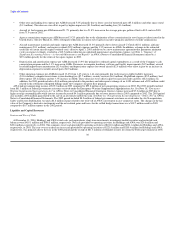 33
33 -
 34
34 -
 35
35 -
 36
36 -
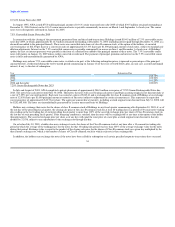 37
37 -
 38
38 -
 39
39 -
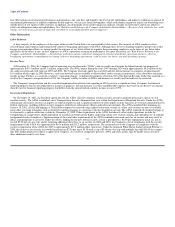 40
40 -
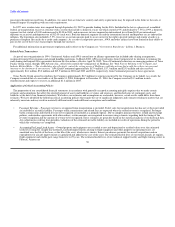 41
41 -
 42
42 -
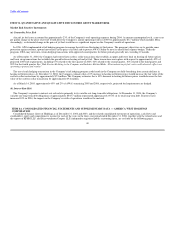 43
43 -
 44
44 -
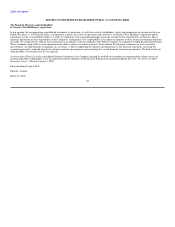 45
45 -
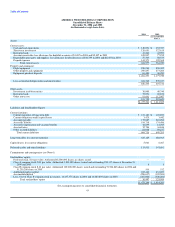 46
46 -
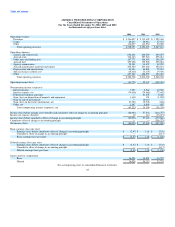 47
47 -
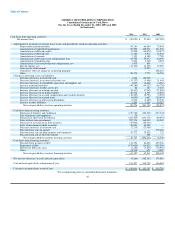 48
48 -
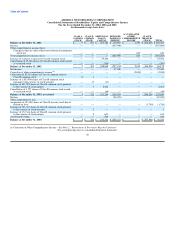 49
49 -
 50
50 -
 51
51 -
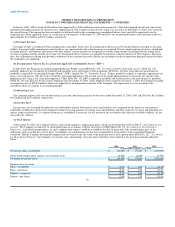 52
52 -
 53
53 -
 54
54 -
 55
55 -
 56
56 -
 57
57 -
 58
58 -
 59
59 -
 60
60 -
 61
61 -
 62
62 -
 63
63 -
 64
64 -
 65
65 -
 66
66 -
 67
67 -
 68
68 -
 69
69 -
 70
70 -
 71
71 -
 72
72 -
 73
73 -
 74
74 -
 75
75 -
 76
76 -
 77
77 -
 78
78 -
 79
79 -
 80
80 -
 81
81 -
 82
82 -
 83
83 -
 84
84 -
 85
85 -
 86
86 -
 87
87 -
 88
88 -
 89
89 -
 90
90 -
 91
91 -
 92
92 -
 93
93 -
 94
94 -
 95
95 -
 96
96 -
 97
97 -
 98
98 -
 99
99 -
 100
100 -
 101
101 -
 102
102 -
 103
103 -
 104
104 -
 105
105 -
 106
106 -
 107
107 -
 108
108 -
 109
109 -
 110
110 -
 111
111 -
 112
112 -
 113
113 -
 114
114 -
 115
115 -
 116
116 -
 117
117 -
 118
118 -
 119
119 -
 120
120 -
 121
121 -
 122
122 -
 123
123 -
 124
124 -
 125
125 -
 126
126 -
 127
127 -
 128
128 -
 129
129 -
 130
130 -
 131
131 -
 132
132 -
 133
133 -
 134
134 -
 135
135 -
 136
136 -
 137
137 -
 138
138 -
 139
139 -
 140
140 -
 141
141 -
 142
142 -
 143
143 -
 144
144 -
 145
145 -
 146
146 -
 147
147 -
 148
148 -
 149
149 -
 150
150 -
 151
151 -
 152
152 -
 153
153 -
 154
154 -
 155
155 -
 156
156 -
 157
157 -
 158
158 -
 159
159 -
 160
160 -
 161
161 -
 162
162 -
 163
163 -
 164
164 -
 165
165 -
 166
166 -
 167
167 -
 168
168 -
 169
169 -
 170
170 -
 171
171 -
 172
172 -
 173
173 -
 174
174 -
 175
175 -
 176
176 -
 177
177 -
 178
178 -
 179
179 -
 180
180 -
 181
181 -
 182
182 -
 183
183 -
 184
184 -
 185
185 -
 186
186 -
 187
187 -
 188
188 -
 189
189 -
 190
190 -
 191
191 -
 192
192 -
 193
193 -
 194
194 -
 195
195 -
 196
196 -
 197
197 -
 198
198 -
 199
199 -
 200
200 -
 201
201 -
 202
202 -
 203
203 -
 204
204 -
 205
205 -
 206
206 -
 207
207 -
 208
208 -
 209
209 -
 210
210 -
 211
211 -
 212
212 -
 213
213 -
 214
214 -
 215
215 -
 216
216 -
 217
217 -
 218
218 -
 219
219 -
 220
220 -
 221
221 -
 222
222 -
 223
223 -
 224
224 -
 225
225 -
 226
226 -
 227
227 -
 228
228 -
 229
229 -
 230
230 -
 231
231 -
 232
232 -
 233
233 -
 234
234 -
 235
235 -
 236
236 -
 237
237 -
 238
238 -
 239
239 -
 240
240 -
 241
241 -
 242
242 -
 243
243 -
 244
244 -
 245
245 -
 246
246 -
 247
247 -
 248
248 -
 249
249 -
 250
250 -
 251
251 -
 252
252 -
 253
253 -
 254
254 -
 255
255 -
 256
256 -
 257
257 -
 258
258 -
 259
259 -
 260
260 -
 261
261 -
 262
262 -
 263
263 -
 264
264 -
 265
265 -
 266
266 -
 267
267 -
 268
268 -
 269
269 -
 270
270 -
 271
271 -
 272
272 -
 273
273 -
 274
274 -
 275
275 -
 276
276 -
 277
277 -
 278
278 -
 279
279 -
 280
280 -
 281
281 -
 282
282 -
 283
283 -
 284
284 -
 285
285 -
 286
286 -
 287
287 -
 288
288 -
 289
289 -
 290
290 -
 291
291 -
 292
292 -
 293
293 -
 294
294 -
 295
295 -
 296
296 -
 297
297 -
 298
298 -
 299
299 -
 300
300 -
 301
301 -
 302
302 -
 303
303 -
 304
304 -
 305
305 -
 306
306 -
 307
307 -
 308
308 -
 309
309 -
 310
310 -
 311
311 -
 312
312 -
 313
313 -
 314
314 -
 315
315 -
 316
316 -
 317
317 -
 318
318 -
 319
319 -
 320
320 -
 321
321 -
 322
322 -
 323
323 -
 324
324 -
 325
325 -
 326
326 -
 327
327 -
 328
328 -
 329
329 -
 330
330 -
 331
331 -
 332
332 -
 333
333 -
 334
334 -
 335
335 -
 336
336 -
 337
337 -
 338
338 -
 339
339 -
 340
340 -
 341
341 -
 342
342 -
 343
343 -
 344
344 -
 345
345 -
 346
346
 |
 |

Table of Contents
ITEM 7A. QUANTITATIVE AND QUALITATIVE DISCLOSURES ABOUT MARKET RISK
Market Risk Sensitive Instruments
(a) Commodity Price Risk
Aircraft jet fuel costs accounted for approximately 23% of the Company's total operating expenses during 2004. At current consumption levels, a one-cent
per gallon change in the price of jet fuel would affect the Company's annual operating results in 2005 by approximately $5.7 million which includes Mesa.
Accordingly, a substantial change in the price of jet fuel would have a significant impact on the Company's results of operations.
In 1996, AWA implemented a fuel hedging program to manage the risk from fluctuating jet fuel prices. The program's objectives are to provide some
protection against extreme, upward movements in the price of jet fuel and to protect AWA's ability to meet its annual fuel expense budget. Under the
program, AWA may enter into certain hedging transactions with approved counterparties for future periods generally not exceeding 12 months.
As of December 31, 2004, the Company had entered into costless collar transactions that establish an upper and lower limit on heating oil futures prices
and basis swap transactions that establish the spread between heating oil and jet fuel. These transactions are in place with respect to approximately 42% of
projected 2005 fuel requirements, including 67% related to the first quarter of 2005, 46% related to the second quarter, 36% related to the third quarter and
20% for the fourth quarter. See "Risk Factors Relating to the Company and Industry Related Risks - Fluctuations in jet fuel costs could adversely affect our
operating expenses and results."
The use of such hedging transactions in the Company's fuel hedging program could result in the Company not fully benefiting from certain declines in
heating oil futures prices. At December 31, 2004, the Company estimates that a 10% increase in heating oil futures prices would increase the fair value of the
costless collar transactions by approximately $7.5 million. The Company estimates that a 10% decrease in heating oil futures prices would decrease the fair
value of the costless collar transactions by approximately $9.6 million.
As of March 14, 2005, approximately 45% and 2% of AWA's remaining 2005 and 2006, respectively, projected fuel requirements are hedged.
(b) Interest Rate Risk
The Company's exposure to interest rate risk relates primarily to its variable rate long-term debt obligations. At December 31, 2004, the Company's
variable-rate long-term debt obligations of approximately $545.7 million represented approximately 69.4% of its total long-term debt. If interest rates
increased 10% in 2004, the impact on the Company's results of operations would not be material.
ITEM 8A. CONSOLIDATED FINANCIAL STATEMENTS AND SUPPLEMENTARY DATA — AMERICA WEST HOLDINGS
CORPORATION
Consolidated balance sheets of Holdings as of December 31, 2004 and 2003, and the related consolidated statements of operations, cash flows and
stockholders' equity and comprehensive income for each of the years in the three-year period ended December 31, 2004, together with the related notes and
the reports of KPMG LLP, and PricewaterhouseCoopers LLP, independent registered public accounting firms, are set forth on the following pages.
40
